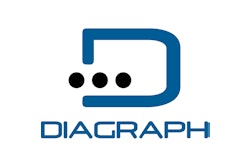
The Wayne E. Bailey Produce Co. (WEB) of Chadbourn, NC, has a long tradition of adopting new ideas and technologies. Started in 1935, the family-owned producer of sweet potatoes has played a key role in transforming the vegetable from a seasonal item to a year-round favorite through innovative marketing and new technologies to support the needs of its customers. The first to introduce electronic sizing to the sweet potato industry in the 1980s, the customer-focused company continues its legacy of innovation with a state-of-the-art facility that uses advanced technology to provide cleaner, safer sweet potatoes with longer shelf lives.
A couple of years ago, when key retail customer Publix adopted the Produce Traceability Initiative (PTI), WEB recognized the need to implement a system in its packing operation to ensure that it was in compliance. An industry-led effort to improve traceability throughout the produce supply chain in North America, PTI outlines the key steps that growers, packers, shippers, and retailers can take to implement case-level electronic traceability from the field to the grocery store.
Under WEB’s existing system, its sweet potatoes were already traceable by an internal process that utilized an ink roller to apply a lot number and product size to each box that was recorded in the company’s inventory management system. However, compliance with PTI required the company to adopt the standardized labeling format and electronic recordkeeping requirements outlined by the initiative. The solution would need to be able to accurately identify as many as 14 to 15 different product sizes during a production run without impacting the production rate or requiring major changes to the process.
To implement PTI, WEB adopted RedLine Solutions’ RedLine Packing™ inventory, traceability, and case-labeling solution for produce packing operations. The solution was integrated into the company’s existing grower accounting and inventory management system—a key advantage over standalone systems, according to WEB Operations Manager Adam Wooten. The solution included both software and hardware technology, including two automated label printer/applicators from Diagraph and two barcode readers from Microscan, to meet current and future requirements of PTI while maintaining WEB’s production rate of more than 700 cases/hr.
‘PTI benefits everyone’
Spearheading the project from RedLine was company founder and CEO Todd Baggett, who also currently serves as co-chair of the PTI Technology Working Group. Says Wooten, “Todd was instrumental in the process. He knows all about PTI and scanning technology, and he knew how to solve the challenges that we had.”
According to Baggett, many large retailers are adopting PTI; effective Nov. 1, 2013, all fresh produce suppliers to Walmart are required to use case labels that comply with PTI, or their products will be rejected. “If you want to do business with these companies, you will have to have PTI case-level traceability,” he says.
In terms of the labeling format, PTI relies on case-level electronic traceability through brand owner-assigned 14-digit GTIN (Global Trade Identification Numbers) as developed by the global standards organization GSI. Full traceability is achieved when the GTIN and batch/lot number for each case of fresh produce is tracked as the case moves through the supply chain.
Says Baggett, “PTI benefits everyone. By having case-level traceability, when a food safety incident is identified, it will assist the FDA’s investigation, allowing them to more quickly identify the source. Once the source has been identified, growers and retailers will be able to do strategic recalls. This will allow them to pull affected product while leaving product that is not implicated in commerce. This will allow consumers an uninterrupted supply of product and save the tremendous waste of product, time, and money of commodity-wide recalls.”
The packing process
With the RedLine Packing solution implemented in January 2012, the current sweet-potato packing process at WEB is as follows: First, the sweet potatoes are delivered to the company’s packing facility in wooden bins. A label on each bin describes the product variety, state, grower, and quantity in both human-readable and barcode format. These bins are emptied onto a conveyor system, and the potatoes are conveyed onto a grading table where they are manually graded and then sorted by size before being conveyed to one of nine or 10 auto-fill stations. Meanwhile, a “pack code” label is manually applied to cases loaded into the shoots for each auto-fill station, identifying the lane number that the box will be packed on. The product size is entered into the software system, associating a product to the lane.
Once the cases are filled, the pack code on each box is scanned with a Microscan QX 830 barcode reader to confirm the product type, ensuring that each box receives the correct label; if the QX 830 reads the wrong code, the incorrect product is removed from the line. This data is used to generate a PTI-compliant label, which identifies the product by both text and a GS1-128 formatted barcode with the company’s GTIN.
According to Baggett, the QX 830 was selected for the project for its ability to meet the speed requirements of the line and its industrial design, which enables it to operate continuously in the dusty bin dumper environment. “It is also a very cost-effective scanning solution,” he adds. “The QX 830 features native Ethernet, which facilitated integration into RedLine Packing’s existing Ethernet/TCPIP architecture.”
After barcode scanning, a printer/applicator prints and then applies a label to each case, and the cases from each auto-fill station are sent to a common conveyor. Cases are then palletized based on grade and size, and are labeled with a run pack number printed by a Zebra ZM400 industrial printer. The pallet label is generated by the RedLine Packing system, enabling traceability at the pallet level. At the end of each day, all labels from the wooden bins that the sweet potatoes arrived in are scanned into the system and are associated with the day’s run.
The result
Since the system was incorporated in January 2012, WEB has experienced the benefits of increased labeling accuracy, traceability throughout the packing line, and the assurance that the company is in compliance with PTI. True to its forward-thinking legacy, the company is fully prepared as new customers adopt the initiative, and the flexible system ensures that it will continue to be equipped as the company grows. WEB’s next steps include plans to incorporate the RedLine software package into its cooler operation to achieve order fulfillment validation and real-time shipping transactions.
WEB continues to lead the sweet potato revolution. Says company President George Wooten, “With the positive press sweet potatoes have been receiving [as a superfood], we see tremendous growth ahead.”


























